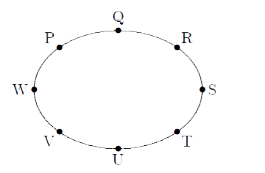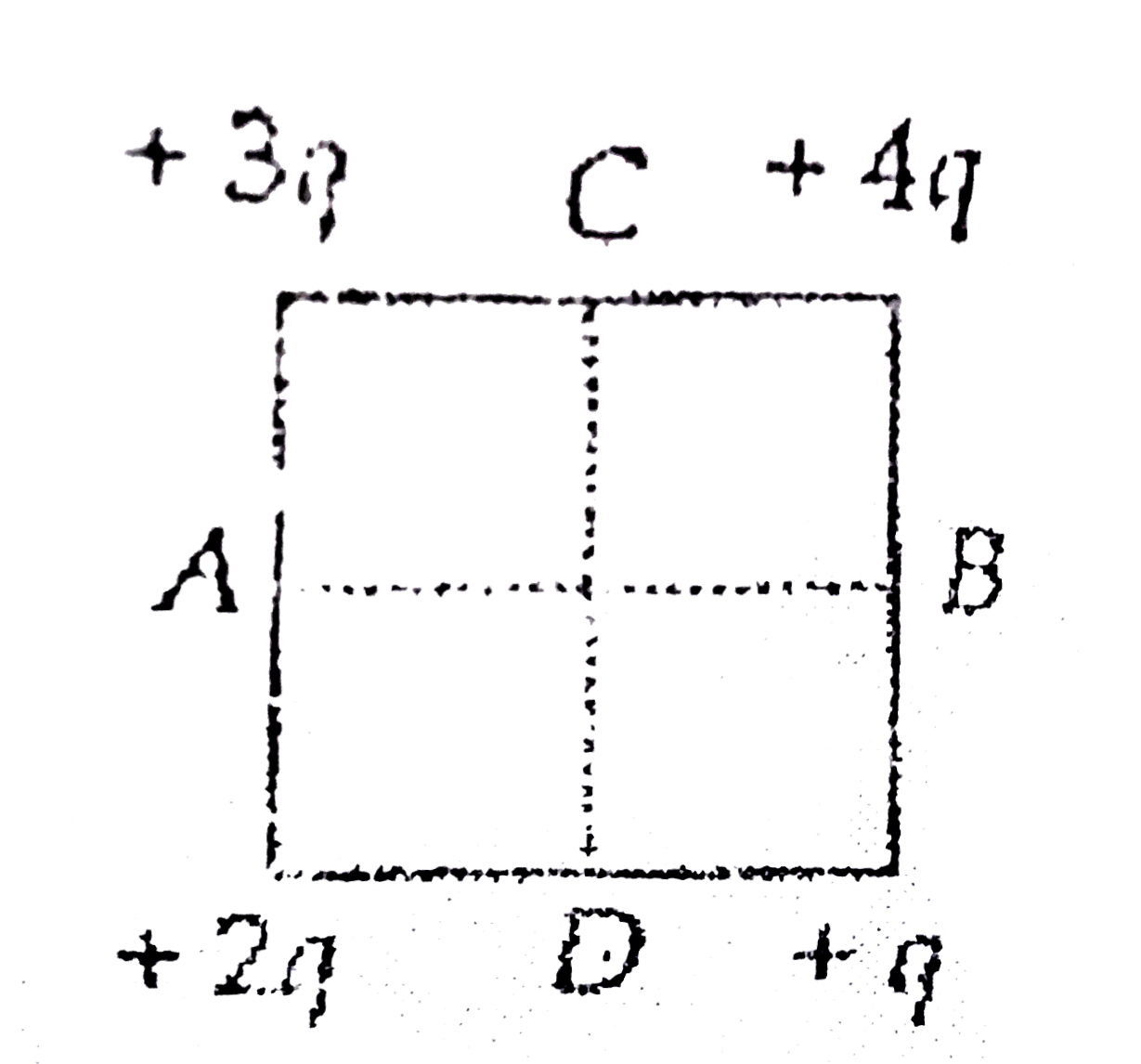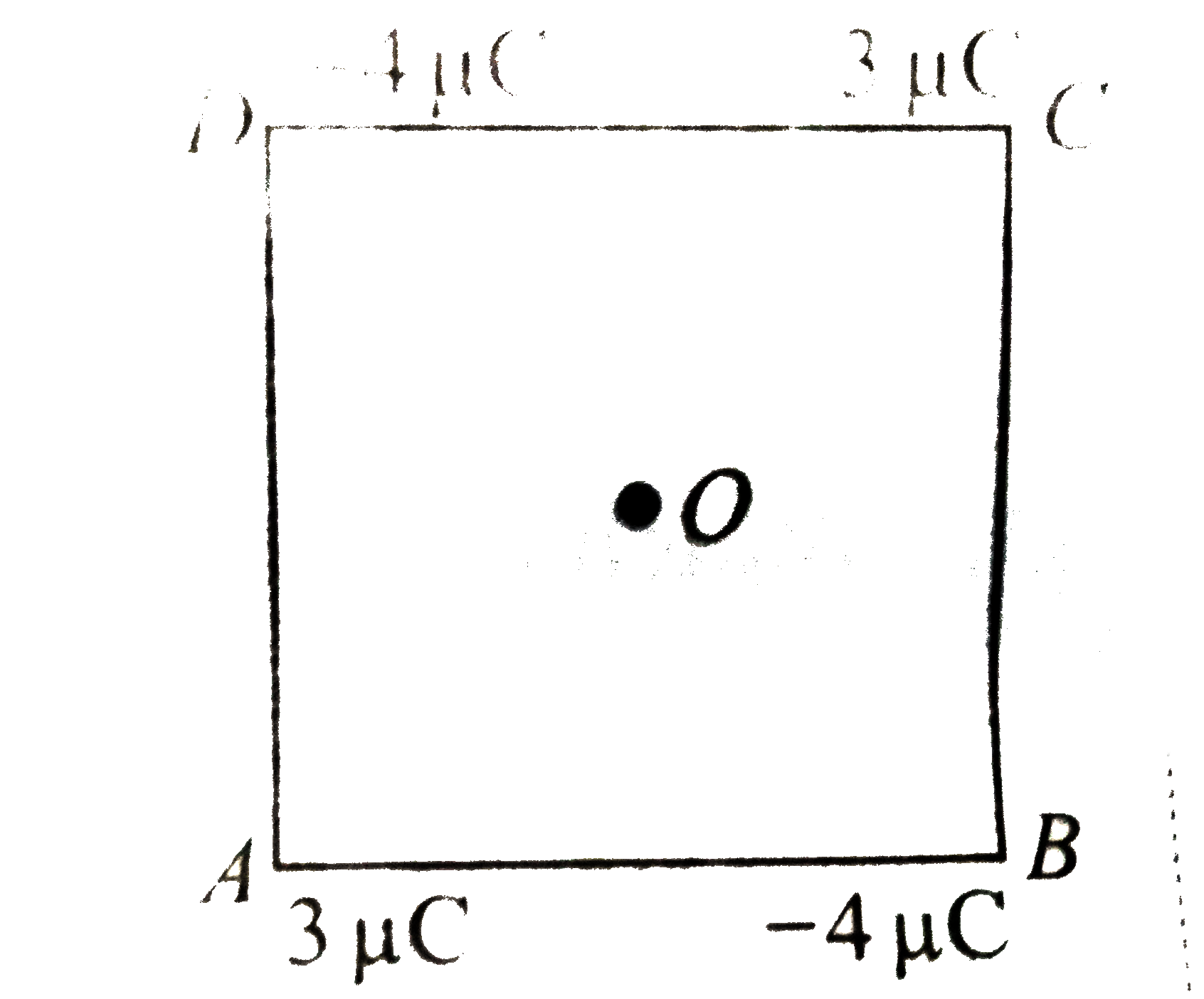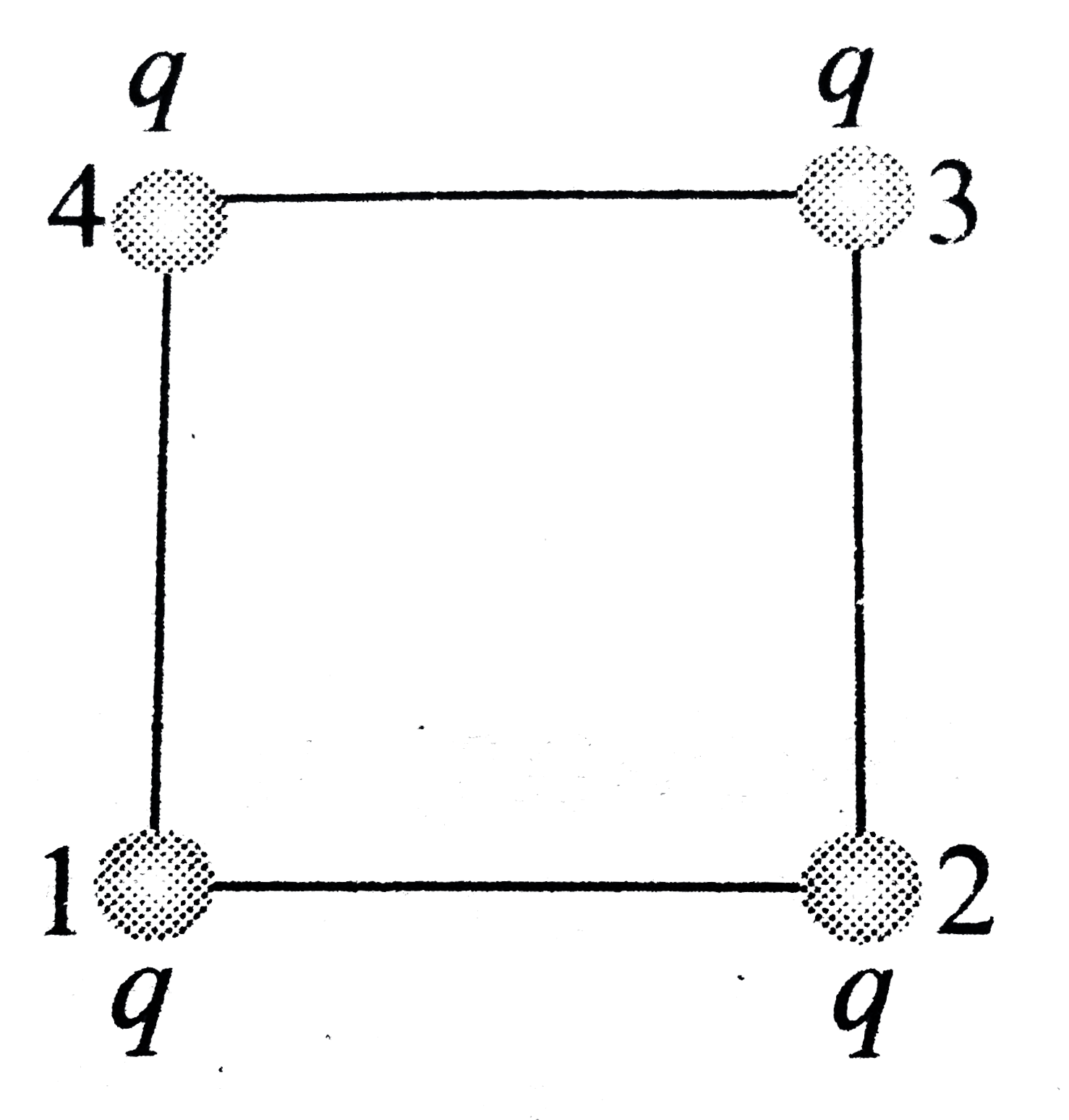It is requird to hold four equal point charges +q in equilibrium at the corners of a square. Find the point charge that will do this, if placed at the centre of the square.
To solve the problem of holding four equal point charges +q in equilibrium at the corners of a square with a charge Q0 placed at the center, we will follow these steps:
Step 1: Understand the Configuration
We have four charges +q placed at the corners of a square. We need to find the charge Q0 that should be placed at the center of the square to keep these charges in equilibrium.
Step 2: Identify Forces Acting on One Charge
Consider one of the corner charges, say charge 1. It will experience repulsive forces due to the other three charges (charges 2, 3, and 4). The forces between these charges are given by Coulomb's law.
Step 3: Calculate the Forces Between Charges
1. The distance between any two corner charges is the side of the square, which we denote as a.
2. The distance from the center of the square to any corner charge is a√2 (the diagonal distance divided by 2).
The force between two corner charges (for example, between charge 1 and charge 2) is:
F12=kq2a2
The force between charge 1 and charge 4 is the same:
F14=kq2a2
The force between charge 1 and charge 3, which is at a diagonal distance, is:
F13=kq2(a√2)2=kq22a2
Step 4: Resolve Forces
The forces F12 and F14 are perpendicular to each other. To find the resultant force FR acting on charge 1 due to charges 2 and 4, we can use the Pythagorean theorem:
FR=√F212+F214=√(kq2a2)2+(kq2a2)2=kq2a2√2
Step 5: Calculate the Net Force
The net force acting on charge 1 due to the other three charges is:
Fnet=FR+F13=kq2a2√2+kq22a2
Step 6: Set Up the Equation for Equilibrium
For the charge Q0 at the center to maintain equilibrium, it must exert an equal and opposite force on charge 1. The force exerted by Q0 on charge 1 is given by:
FQ0=kQ0q(a√2)2=k2Q0qa2
Setting the forces equal for equilibrium:
k2Q0qa2=k(√2+12)q2a2
Step 7: Solve for Q0
Cancelling k and a2 from both sides, we have:
2Q0=(√2+12)q
Thus,
Q0=12(√2+12)q
Step 8: Determine the Sign of Q0
Since the forces are repulsive, Q0 must be negative to attract the positive charges at the corners:
Q0=−12(√2+12)q
Final Answer
The charge Q0 that will hold the four equal point charges +q in equilibrium at the corners of the square is:
Q0=−1+2√24q
We have four charges +q placed at the corners of a square. We need to find the charge Q0 that should be placed at the center of the square to keep these charges in equilibrium.
Consider one of the corner charges, say charge 1. It will experience repulsive forces due to the other three charges (charges 2, 3, and 4). The forces between these charges are given by Coulomb's law.
1. The distance between any two corner charges is the side of the square, which we denote as a.
2. The distance from the center of the square to any corner charge is a√2 (the diagonal distance divided by 2).
F12=kq2a2
The force between charge 1 and charge 4 is the same:
F14=kq2a2
The force between charge 1 and charge 3, which is at a diagonal distance, is:
F13=kq2(a√2)2=kq22a2
The forces F12 and F14 are perpendicular to each other. To find the resultant force FR acting on charge 1 due to charges 2 and 4, we can use the Pythagorean theorem:
FR=√F212+F214=√(kq2a2)2+(kq2a2)2=kq2a2√2
The net force acting on charge 1 due to the other three charges is:
Fnet=FR+F13=kq2a2√2+kq22a2
For the charge Q0 at the center to maintain equilibrium, it must exert an equal and opposite force on charge 1. The force exerted by Q0 on charge 1 is given by:
FQ0=kQ0q(a√2)2=k2Q0qa2
k2Q0qa2=k(√2+12)q2a2
Cancelling k and a2 from both sides, we have:
2Q0=(√2+12)q
Thus,
Q0=12(√2+12)q
Since the forces are repulsive, Q0 must be negative to attract the positive charges at the corners:
Q0=−12(√2+12)q
The charge Q0 that will hold the four equal point charges +q in equilibrium at the corners of the square is:
Q0=−1+2√24q
Similar Questions
Four equal point charges, each of magnitude +Q, are to be placed in equilibrium at the corners of a square. What should be the magnitude and sign of the point charge that should be placed at the center of the square to do this job?
View SolutionA point charge Q is placed at the corner of a square of side a. Find the flux through the square.
View SolutionA planet travels in an elliptical orbit about a star as shown. At what pair of points is the speed of the planet the same?
 View Solution
View SolutionFour charges are arranged at the corners of a square as shown in the figure. The direction of electric field at the centre of the square is along
 View Solution
View SolutionFour point charges are placed at the corners of a square ABCD of side 10 cm, as shown in figure. The force on a charge of 1μC placed at the centre of square is
 View Solution
View SolutionFour identical point charges q are placed at four corners of a square of side a. Find the potential energy of the charge system.
 .View Solution
.View SolutionFour point charges are placed at the corners of a square of side l. Calculate potential at the centre of square.
 View Solution
View SolutionFour identical charges q are placed at the corners of a square of side a. Find the potential energy of one of the charges due to the remaining charges.
 .View Solution
.View SolutionEight equal point charges are placed at corners of a cube side length a. The potential and electric field magnitude at the centre of cube will be
View SolutionFour equal masses (each of mass M) are placed at the corners of a square of side a. The escape velocity of a body from the centre O of the square is
View Solution

